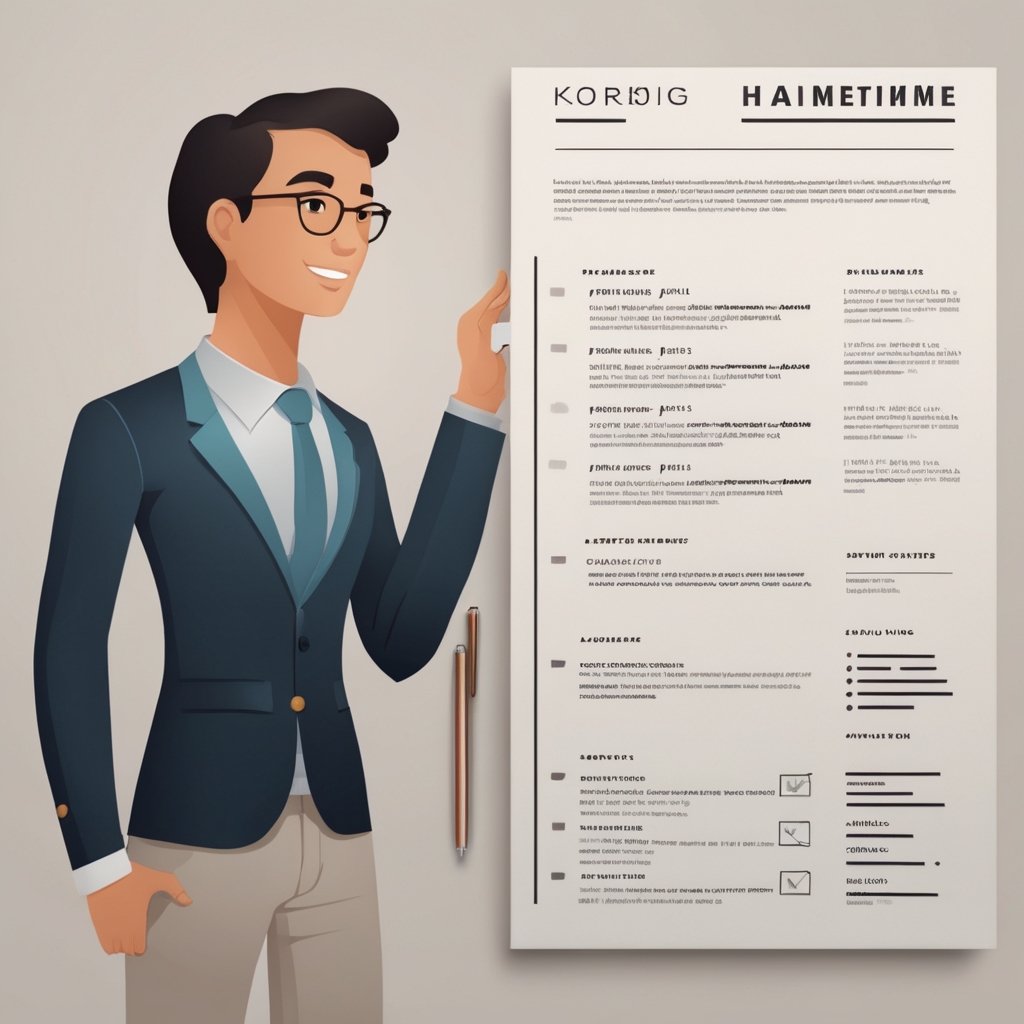Many job applicants, especially entry level ones may struggle with getting the right experience to land them a job, but might have experience volunteering. So the question is; should you list volunteer work on your resume? The answer is yes.
Volunteer experience can be a powerful asset if you know how to present it in a way that highlights its real value, rather than just goodwill. This article will explain why you should add volunteer work on your resume and how you can do it.
What Exactly Counts as Volunteer Work on a Resume?
Not all unpaid activities deserve a spot on your resume. Volunteer experience becomes resume-worthy when it includes consistent responsibilities, measurable outcomes, or leadership opportunities. For example, leading a community food drive, organizing and promoting a local event, or managing logistics for a nonprofit initiative all count. These aren’t isolated times when you helped a neighbor, rather, they’re organized, mission-driven, skills-based activities that reflect teamwork, strategy, and real impact.
On the other hand, work like babysitting a friend’s kids for a single day or showing up to help with a one-time event probably isn’t relevant. It doesn’t convey specialized skills or show your ability to lead or solve problems. Instead, only include volunteer experiences that feel substantial and directly connect to what you might want to bring to your next paid role.
When Does Volunteer Experience Actually Help You Get Hired?
If you’re early in your career, switching industries, or navigating a gap in your employment history, volunteer work can give you a resume edge. Imagine being someone just starting out in nonprofit fundraising, or making a pivot into education from marketing. Listing volunteer leadership, event coordination, or management roles speaks volumes about your commitment, initiative, and ability to learn on the go, even if it wasn’t paid work. Recruiters love seeing real-world proof of transferable skills, especially when you don’t have a long list of traditional job titles.
However, if your resume already contains solid, relevant experience in your field, volunteer work should supplement rather than substitute. You don’t want your resume to feel padded or unfocused. Instead, treat volunteer roles as important, but clearly separated from core professional milestones.
Our top readers enjoyed reading: 5 Things That Must Be On Your Entry-Level Resume (If You Actually Want Interviews in 2025)
Where Should You List Volunteer Work on Your Resume?
You essentially have two strong ways to place volunteer work, depending on its depth and relevance. If the volunteer position feels more like a second job, which probably included significant responsibilities, measurable goals, or strategic leadership, it makes sense to include it in your main Professional Experience section. In this case, treat it just like any paid role: list the volunteer title, the organization name, dates, and then bullet-pointed accomplishments with a focus on outcomes.
For example, say you served as a volunteer event coordinator organizing a health fair attended by hundreds of people. That belongs in Professional Experience because it demonstrates project management, public outreach, and logistical planning—very similar to the skills needed in many corporate or nonprofit jobs.
If you have multiple volunteer roles, or if they sit alongside substantial paid experience, a separate section like Volunteer Experience, Community Involvement, or Civic Engagement works better. Use this space to give those roles visibility without overshadowing your primary work background. Include similar details—titles, dates, achievements—but visually distinguish this section so a recruiter sees it as supplementary, not competing with your paid experience.
How Do You Make Volunteer Work Sound Impressive?
Where plenty of resumes fail is by not treating volunteer entries with the same strategic language and precision as paid roles. You don’t want bullet points that say, “Volunteered at soup kitchen” or “Participated in neighborhood cleanup.” Instead, think in terms of action verbs and quantifiable results.
For instance, “Co-led a monthly food distribution program serving over 300 families, raised awareness through social media outreach that increased attendance by 60%, and trained 15 new volunteers each quarter.” That sentence shows leadership, communication, logistical planning, and data—making it far more compelling than a generic listing.
Another example: imagine you were the volunteer coordinator for a youth mentoring program. Instead of simply stating that you volunteered, talk about how you “recruited and trained 20 volunteers to support a STEM mentorship initiative, resulting in 90% participant retention and a partnership expansion with two local schools.” Again, strong language and numbers—this is the kind of description that catches a recruiter’s eye, and it mirrors how modern hiring systems scan for keywords like “mentor,” “program coordination,” or “volunteer training.”
Are There Times You Should Leave Volunteer Work Off Your Resume?
There are moments when volunteer experience might do more harm than good—especially if it’s outdated or irrelevant. If you’re listing volunteer work from more than seven or ten years ago, it may feel disconnected or irrelevant, unless it directly relates to your current job goals. Recruiters are focused on present value, not distant history.
Similarly, if your professional experience already reflects the senior roles you’re targeting, volunteer positions may clutter your resume. A senior product manager with twenty years of industry leadership likely doesn’t need a volunteer listing about organizing bake sales or neighborhood cleanups—unless it illustrates a transferable skill uniquely relevant to their current goals.
Lastly, consider space. If including volunteer roles pushes your resume to two pages when you could tell your core career story in one, it may be better to trim or remove those entries to maintain focus and readability.
Does Volunteer Experience Help Your Resume Stand Out in 2025?
Volunteer experience isn’t just feel-good content—it plays a strategic role in both human and automated resume readers. For applicant tracking systems (ATS), having keywords like “leadership,” “event planning,” “community outreach,” or industry-relevant terms sprinkled in volunteer descriptions can help match you to job roles you might not have considered.
For recruiters, volunteer entries demonstrate initiative, mindset, and values. If a hiring manager sees that you took the time to lead or project-manage something you cared about—even in your spare time—it speaks more about your character than a one-liner about a job title.
Volunteer work also fills gaps. If you took a personal break for caregiving, travel, or other reasons, listing meaningful volunteer roles shows you stayed engaged, proactive, and productive during that time—without resorting to vague explanations.
What’s the Best Way to Phrase Volunteer Experience on a Resume?
Let’s look at a couple of before‑and‑after comparisons:
Before:
Volunteer, Animal Shelter, 2022–2023
• Helped feed cats, cleaned supplies, greeted visitors.
After:
Volunteer Relations Coordinator, City Animal Shelter, Jan 2022–Dec 2023
• Recruited, trained, and scheduled 30+ weekend volunteers
• Increased adoption events attendance by 45% using social media campaigns
Another example for someone switching into HR or training:
Before:
Volunteer, Youth Program, 2021–2022
• Assisted with workshops and events.
After:
Program Coordinator, Youth Development Nonprofit, Sep 2021–May 2022
• Organized six monthly career development workshops for 150+ teens
• Designed feedback surveys and improved participant satisfaction by 25%
Each “after” example presents a clear story: you led something, you improved something, you impacted something. That’s the kind of language that gets attention.
Keep It Modern, Keep It Human
No one wants to read resumes that feel stuck in the past. A clean, modern resume format—not Times New Roman, not a cluttered layout—helps your volunteer experience feel current and professional. Integrating bullet points, white space, and readable typography creates an attractive page that both humans and ATS can parse easily.
It’s also important to avoid generic labels like “Leadership Experience” or “Community Work” without specificity. Instead, use clear headings like “Volunteer Project Management” or “Nonprofit Experience”, and keep your descriptions outcome-focused.
Need Help Building a Resume That Shows Your Best Self?
If you’re excited about adding volunteer work but want to be strategic about how it fits into your overall profile, tools like Lightforth’s LightResume Builder could be exactly what you need. It guides you through layout, content relevance, keywords, and formatting nuances so your volunteer experience enhances—rather than dilutes—your resume.
LightResume helps you choose the right sections for your strengths (like including a volunteer section or weaving it into your experience), uses keyword prompts that ATS scan for, and ensures your resume looks intentional and polished. Because position titles change, but storytelling earns interviews.
Volunteering is more than just time well spent, it can be a gateway to careers, connections, and credibility. If you present it the right way, it could help unlock the next chapter of your professional journey.
FAQs
1. How do I mention volunteer work in my resume?
Include it in a dedicated “Volunteer Experience” section or under “Professional Experience” if it’s highly relevant to the role. Use the same format as paid jobs by including the organization name, your title, dates, and bullet points describing your responsibilities and impact.
2. What is a better word for volunteer on a resume?
You can use terms like “Contributor,” “Team Member,” “Coordinator,” or “Pro Bono [Role Title]” depending on what you did. Choose language that highlights your skills and responsibilities rather than just the fact that the role was unpaid.
3. What volunteering looks best on a resume?
Volunteer work that aligns with the job you’re applying for or shows transferable skills is most valuable. Examples include mentoring, project coordination, fundraising, tutoring, event planning, or anything with leadership, teamwork, or communication responsibilities.
4. What is an example of a volunteer objective on a resume?
“Motivated marketing graduate seeking to contribute communication and social media skills to a non-profit organization as a volunteer, while gaining real-world experience and supporting a meaningful cause.”
5. How to write a CV for volunteer work?
Treat it like a professional CV. Include your contact info, a brief personal statement, relevant skills, and a “Volunteer Experience” section. Describe your roles clearly, focusing on your impact and the skills you gained, even if the work was unpaid.





